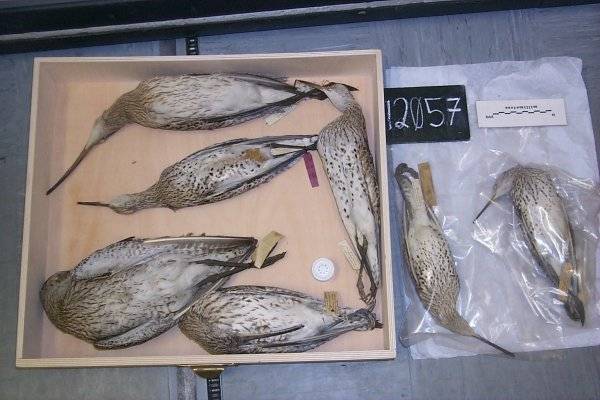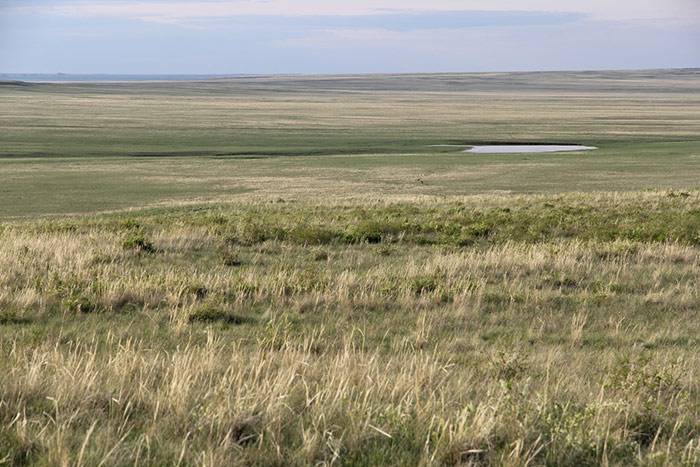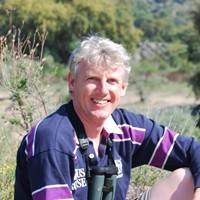Where did Slender-billed Curlews breed?
Guest blog by Graeme Buchanan

The number of fully documented slender-billed curlew nests ever found could be counted on one hand. And they all come from the turn of last century from near Omsk in Siberian Russia. This area falls just outside the OSME region but this species was a regular passage and wintering visitor, even if it did not breed. The full extent of the breeding areas has always been unclear. But the delimitation of the potential breeding range could be an important step to potentially rediscovering this lost species.
A recent paper in Bird Conservation International (Buchanan et al in press) has attempted to do just this using stable isotopes. Staff at the RSPB Centre for Conservation Science led on the analysis of data on these chemical signatures in feathers of birds. This work began many years ago, and although just two of the five authors are currently at the RSPB, all have worked there.
Samples of feathers from slender-billed curlew skins were generously provided by museums across the globe. As juvenile primary feathers are grown on the breeding areas, we knew that the chemical signatures in the feathers would lead us to the breeding areas. We focussed on the chemical signature from hydrogen. Concurrently, a series of expeditions, coordinated and led by Geoff Hilton, now of WWT, sampled feathers of waders at known locations from across Russia and Kazakhstan. These expeditions collected a wide range of samples, and recorded the coordinates of each sample.
The ratio of hydrogen isotopes in these feathers and slender-billed curlew juveniles were measured by Steve Brookes and Ian Begley at Iso-Analytical in the UK. Maps of the ratio of hydrogen isotopes across the globe, based on observation and interpolation, have been available for many years. By comparing the values measured in the wader feathers collected by Geoff’s expeditions with those from these large scale maps, we were able to produce a ‘calibration equation’. This linked feather values to mapped values. The feather values from the slender-billed curlews were fed into this equation, enabling us to identify where these juveniles grew their primary feathers.
And we were very surprised by what came out of the analysis. The core of the breeding range was not predicted to be around Omsk, but was much further south in the forest-steppe interface in northern Kazakhstan (Figure 2 in the Bird Conservation International paper). Omsk was identified as the source of some birds, but these results indicated that recent searches were taking place on the edge of the range. The area identified as the potential source has a history of hiding large bird populations – surveys of this area found far larger populations of sociable lapwings than were thought to exist. Could the slender-billed curlew also hang on in this area? While none of the sociable lapwing field work has found any slender-billed curlews, that does not mean they are not there. Not only are they difficult to identify but they also might occupy slightly different habitat from the lapwings.

Curlews and others within their tribe at under increasing risk globally, and many are heading the way of the slender-billed curlew (Pearce-Higgins et al). They need all the help they can get. So we encourage all birders visiting or working in this area to keep an eye out for slender-billed curlews. Even if you don’t see any your records could still be useful (Crockford et al). As before noted in our previous blog, anyone seeing a potential slender-billed curlew should take detailed notes and photographs. These will be essential to assess the veracity of the record. They should contact the slender-billed curlew working group without delay (nicola.crockford@rspb.org.uk). Further information on slender-billed curlews, including a downloadable identification leaflet can be found at www.slenderbilledcurlew.net. The OSME region covers not just major passage and wintering areas for the slender-billed curlew, but now appears to contain the main historical breeding areas too.
Graeme Buchanan is first and foremost a birder, and birding has taken him to every continent (except Antarctica). He works for RSPB as Principal Conservation Scientist in the International Research section of the RSPB Centre for Conservation Science. Much of his work involves the use of spatial data, including remote sensing data, to inform conservation priorities. When not birding, he can be found cycling one of his fleet of bikes near where he lives just outside Edinburgh, UK

